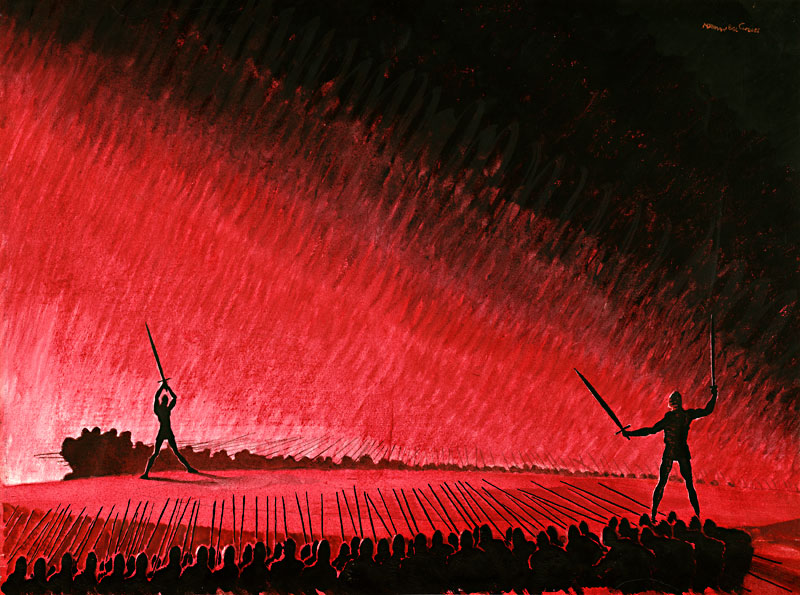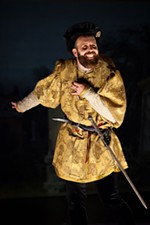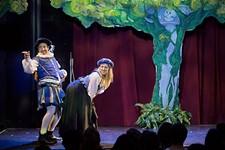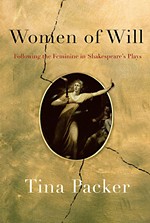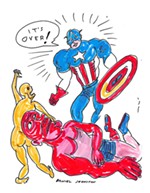"Shakespeare in Print and Performance" at the Ransom Center
This exhibition celebrates the Bard with rare artifacts from the HRC's rare book and theatre arts collections
Reviewed by Robert Faires, Fri., Jan. 1, 2016
With the 400th anniversary of William Shakespeare's death mere months away (April 23, 2016 – mark those calendars!), arts institutions worldwide are devoting even more attention to the dramatist now than usual. The University of Texas' Harry Ransom Center is among them, using the occasion to spotlight some of the lesser known – and certainly lesser seen – holdings from its rare book and theatre arts collections. Who knew the HRC even owned John Wilkes Booth's promptbook for Richard III? And yet here it is, part of the curious miscellany of literary and theatrical artifacts in the exhibition "Shakespeare in Print and Performance."
The title should tip you off that the HRC's focus here isn't on the author so much as on his legacy, and it also reveals something of the exhibition's split personality. On the one hand is "Shakespeare in Print," consisting almost wholly of historic copies of printed works in display cases. On the other is "Shakespeare in Performance," a more expansive display of items involved in staging the author's work, primarily in the 19th and 20th centuries: promptbooks for actors and stage managers, painted costume and set renderings, photos and film from productions of note. The former is all about the text and requires a close reading to obtain the full flavor of the English printing industry in the 16th and 17th centuries, and how it affected both Shakespeare's career and later generations' understandings of his plays. The latter is much more into visuals, letting images from various productions illustrate how interpretations of Shakespeare's dramas have changed over time. It's as basic as the difference between a book and a play, between learning about Shakespeare in a classroom and in a theatre.
The thrill of "Shakespeare in Print" stems from the sense of proximity it gives us to the author and his world. Looking at books that mention Shakespeare and were printed while he lived is akin to looking at a newspaper from the past: Through this surviving artifact, we feel a connection across time. And the curators establish how unformed the trades of playwright and publisher were in that era. The former were writing scripts for immediate consumption rather than literary posterity, revising them from one run to the next, collaborating with other writers without credit. The latter, meanwhile, were cobbling together plays to print from handwritten manuscripts, promptbooks, and what actors remembered of their lines, and with spelling and punctuation not standardized, room for variations in texts was huge. Just seeing how that flesh that Hamlet desires to melt goes from being printed as "sallied" (or is it "sullied"?) to "solid" conveys what a rough-and-tumble, make-it-up-as-you-go-along frontier Shakespeare worked in.
By contrast, the world of "Shakespeare in Performance" is one in which the Bard's monumental stature is established, and theatre artists are striving to stage his plays with an artistic vision as grand or profound as his. Whether the look is of elaborate ornamentation and historical authenticity or modernist simplicity and primal power, the impulse behind them is the same: to create a world onstage as compelling as the one the playwright put on the page. And several examples here achieve that aim: The bold King Lear designs by Norman Bel Geddes and the lushly fantastic Midsummer Night's Dream by Max Reinhardt are epic enough to lose yourself in – and you may find yourself wishing you could, in a live performance. The drawback to this part of the exhibition – indeed, to any museum exhibition related to Shakespeare – is that it can carry you only to the edge of a full Shakespearean experience. To get all the way there, you need to hear his words spoken, see his characters live, follow them on their journeys. To the HRC's credit, it's trying to bridge that gap with assorted live readings and screenings of Shakespeare's works, so check its calendar of events.
Even so, "Shakespeare in Print and Performance" may leave you wanting more. Unlike Ransom Center shows such as "Alice's Adventures in Wonderland" and "The Making of Gone With the Wind," this exhibit isn't driven by one overarching vision or narrative. Its dual nature and the very different ways in which its two parts tell their stories make it tough for them to connect or cohere, especially given the smaller space they have to work with. The curatorial team (on which, full disclosure, my daughter Rosalind worked) has assembled a number of fascinating items here that offer tantalizing glimpses into the career and legacy of our Will. It's just that we know there's so much more to see.
"Shakespeare in Print and Performance"
Harry Ransom Center, 21st & Guadalupe, UT campusThrough May 29





